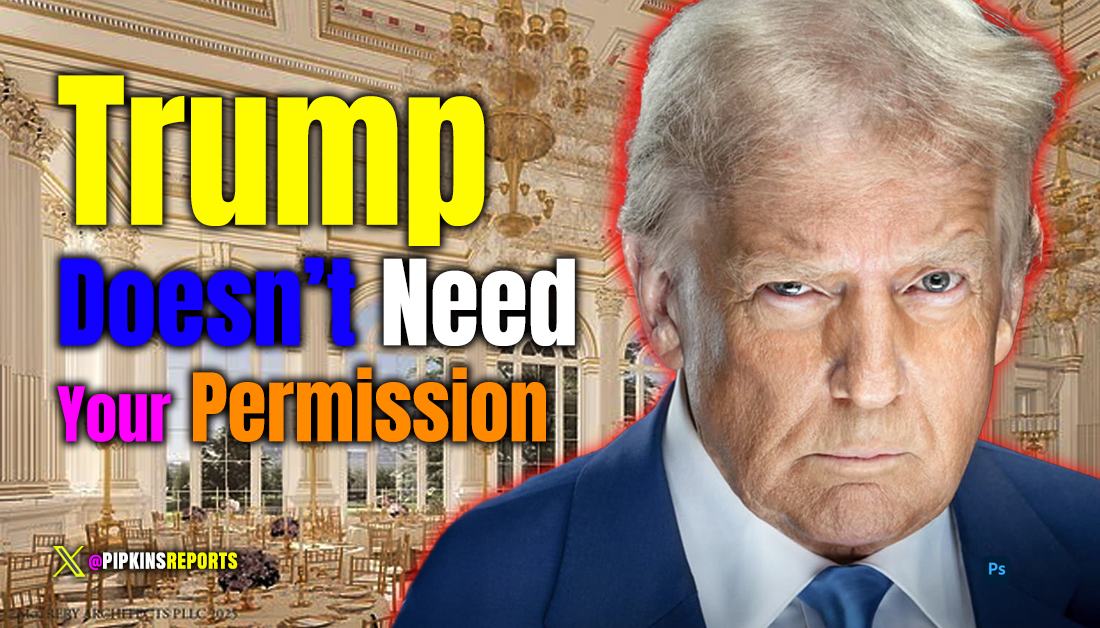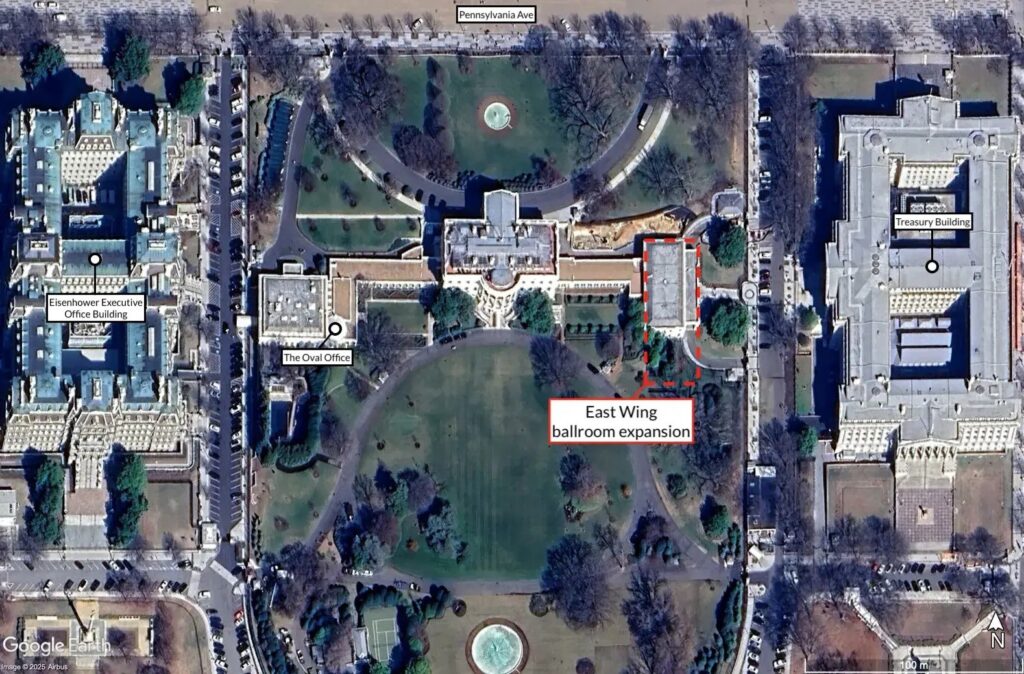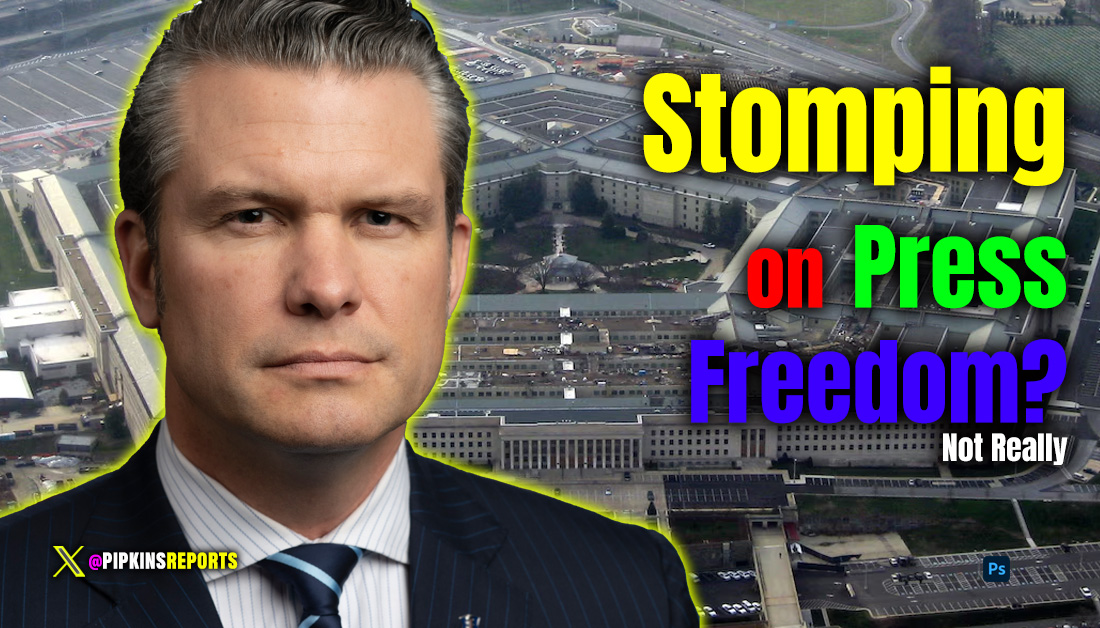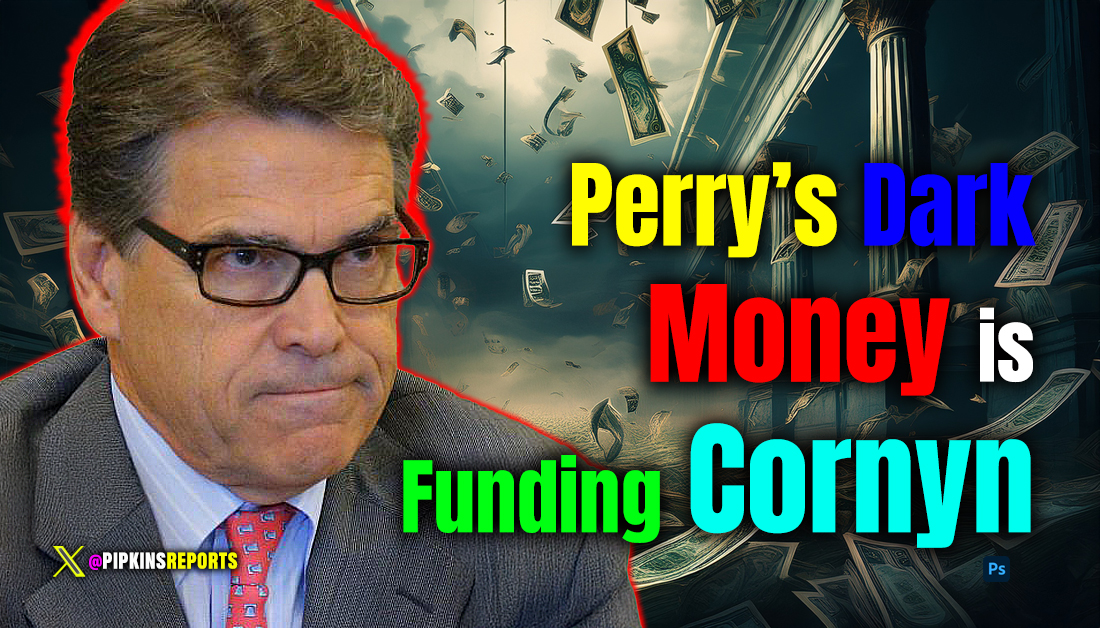
ActBlue Under Fire as Suspicious Donations Surface in Fate, Texas
Fate, Texas—In a town where the population hovers just above 18,000, the idea of shadowy, large-scale political fundraising schemes seems far-fetched. Yet, recent revelations have brought the controversy surrounding ActBlue, a major fundraising platform for Democratic candidates, right to our doorstep. A deep dive into the Federal Election Commission (FEC) records, coupled with ground-level investigations, has uncovered a disturbing pattern of political donations tied to individuals no longer residing at the reported addresses or in some cases, donations so minuscule and frequent that they raise more questions than they answer.
A Surge in Small Donations: A National Issue Hits Home
The story of ActBlue’s allegedly fraudulent donation practices first gained national attention when investigative reporter James O’Keefe confronted individuals listed as frequent donors. What he found was alarming—elderly citizens who barely remembered donating were purportedly giving thousands of dollars through ActBlue, often multiple times a day. The implications were clear: either these individuals were being exploited, or their identities were being used without their consent. Senator Marco Rubio even demanded a Federal Election Commission (FEC) investigation into what he described as “alarming reports of fraudulent donations.”
Here in Fate, our own investigation into ActBlue and related Democratic fundraising platforms has revealed a series of irregularities that echo these national concerns. We’ve identified several individuals whose reported donations raise significant questions.
The Case of Will: A Generous Ghost Donor?
Will V., who previously lived on Churchill Drive in Fate, TX, appears to be one of the most prolific donors to the Democratic Congressional Campaign Committee (DCCC) through ActBlue. According to FEC records, Will, or someone using his name, made 237 donations totaling $2,127.00 over 17 months, for an average of 14 donations per month. There were days when he reportedly made three, four, or even five donations. However, when we visited the address tied to these donations, we discovered that Will hadn’t lived there for over two years. The current resident speculated that he may have moved to Arizona, but we could not confirm his whereabouts or reach him for comment.
The question arises—if Will has not been living at the listed address, who is behind these donations? Is someone using his identity, or is this a case of fraudulent reporting by the platform? The situation mirrors similar concerns raised by the national ActBlue investigation, where individuals were shocked to find themselves listed as frequent donors.
Sandra: A Pattern of Small, Frequent Donations
Another curious case involves Sandra D. of Butternut Drive. Over 16 months, Sandra made 40 donations totaling $366.00. Most of her contributions were $5.00, with a few at $10, $15, and $20. Interestingly, all her donations since May 2023 were earmarked specifically for the DCCC.
Yet, like Will, Sandra no longer resides at the address tied to her donations. The current resident was less than forthcoming, only mentioning that Sandra had moved “recently.” However, the pattern of small, frequent donations, especially from someone no longer residing at the listed address, raises red flags. Is Sandra aware of these donations, or is someone else using her name?
Diane: Pennies Add Up in Political Fundraising
Diane J., who lived on Hankinson Lane, presents another perplexing case. Over 17 months, Diane made 59 donations totaling $178.71. Her donations often came in amounts as small as $0.40, $0.57, and $1.00. All donations under $1.00 were directed to ActBlue.
Upon visiting the address associated with Diane, we learned that she hadn’t lived there in several years. The current resident reported that Diane rented the property out before eventually selling it due to issues with tenants. Once again, the question arises—who is making these donations, and why in such small amounts?
How a Donation Ledger Should Look
Of the half-dozen of door knocks we made, only one turned out to have a resident that was living at the address, and who confirmed the donations listed in the register. Cathy Z. of Landon Trail, made 41 donations totaling $394.00. Unlike the others, Cathy confirmed that she made these donations, mostly in amounts of $5.00, $10.00, $15.00, or $20.00. What is different about the accounting for her donations is that ALL of her donations were earmarked for specific candidates rather than reserved for the DCCC or ActBlue. Furthermore, unlike the others, there were no ‘odd’ fractions or dollar amounts. In short, her ledger looks clean and represents a normal, human pattern.
The National Context: ActBlue Under Scrutiny
The issues we’ve uncovered in Fate are a microcosm of the broader concerns surrounding ActBlue. Nationally, Republican lawmakers have raised alarms about potentially fraudulent donations and deceptive fundraising practices. Representative Claudia Tenney, R-N.Y., recently called on the FEC to investigate ActBlue’s practices, citing “fraudulent, deceptive, and potentially illegal behavior.” These allegations have prompted Texas Attorney General Ken Paxton to launch his own investigation into ActBlue.
Paxton’s investigation has already yielded some results. Because of the investigation, ActBlue now requires CVV codes for donations, a change that Paxton hailed as a critical measure to prevent fraudulent contributions. The CVV code (that 3 digit number on the back of your credit card) is what attaches that card to the specific person named on the card. However, it’s not clear whether this will solve the problem of donations made in the name of another person, as the payment for the donation is a separate system from that of the donations. A CVV only ensures that the person making the payment is the same person who’s name appears on the card. But it could provide a mechanism for law enforcement to match up payments with donations, something that is currently impossible.
The Local Impact: Are Fate Residents Being Exploited?
For a small town like Fate, the idea that residents’ identities could be used in a nationwide political fundraising scheme is troubling. The cases of Will, Sandra, Diane, and others raise serious questions about how ActBlue and similar platforms operate. Are these platforms exploiting unsuspecting individuals, particularly the elderly, or is there something more sinister at play?
The national investigations into ActBlue are ongoing, and it’s unclear what the final outcome will be. However, what is clear is that small towns like Fate are not immune to the tactics and controversies that plague national politics. The residents of Fate deserve answers, and it’s incumbent upon both local and national authorities to get to the bottom of these suspicious donations.
Protect Yourself
Fate residents should be vigilant and protect themselves. You should check the FEC database to see if someone is making donations in your name. If you find your name listed as a donor without your knowledge or if you suspect fraudulent activity, it’s crucial to report it immediately. The integrity of our political system depends on the transparency and accountability of those who operate within it.
For now, the questions raised by these cases are anything but small. In a world where political influence often seems to be dictated by those with the deepest pockets, the integrity of the individual voter—no matter how small their donation—must be protected.
The Fate Tribune will continue to monitor this developing story and report on any new findings. As always, we encourage our readers to reach out with any information or concerns they may have regarding this or other issues affecting our community.
Note: All the names and addresses mentioned in this article have been cross-referenced with FEC records. Even though names, addresses, and donations are public records, we have elected to redact the full last name of Fate residents and include only the minimum information necessary to provide a complete report.

Featured
National Trust Tries to Bully the President

The National Trust for Historic Preservation (NTHP), a private 501(c)(3) nonprofit, sent a sharply worded “demand” letter to the National Park Service (NPS) on October 21, aiming to halt President Trump’s bold plan to demolish the White House’s East Wing for a grand 90,000-square-foot ballroom addition.
The move, meant to modernize the People’s House for state dinners and global summits, has preservationists clutching their blueprints in horror. But this isn’t about saving history—it’s about a private club flexing muscle it doesn’t have, trying to strong-arm an Executive Branch that answers only to the Constitution and the American people.

Let’s get one thing straight: The NPS, which oversees the White House as a national historic site, isn’t a free-floating bureaucracy taking orders from self-appointed guardians of granite. It’s a cog in the Department of the Interior, a cabinet-level agency nestled firmly within the Executive Branch. Article II of the Constitution vests the President with singular authority to administer the government, meaning the NPS takes its marching orders from 1600 Pennsylvania Avenue, not a donor-funded NGO with a fancy letterhead. The President doesn’t need a permission slip from anyone—least of all a group whose congressional charter from 1949 (Title 54 U.S.C.) grants them zero enforcement power, only a soapbox to “facilitate public participation” in preservation debates.
The White House, battered by time and tight quarters, needs this upgrade. The East Wing, a 1940s wartime add-on, wasn’t built for 21st-century diplomacy. Trump’s team, riding a fresh mandate from 74 million voters, broke ground on October 20 to clear the way for a ballroom that can host world leaders without elbowing ambassadors into the Rose Garden. It’s a practical fix, not a wrecking ball to history. Yet the NTHP, led by President and CEO Carol Quillen, fired off their letter to the NPS, the National Capital Planning Commission (NCPC), and the Commission of Fine Arts, demanding a “pause” until the project undergoes “legally required public review processes.” Their fear? The new wing might “overwhelm” the White House’s aesthetic balance, as if a President’s vision for his own residence needs a focus group’s approval.

This is where the NTHP’s overreach gets laughable. Their charter, signed by Harry Truman, makes them a nonprofit cheerleader for preservation, not a coequal branch of government. They’re a membership organization—think country club for history buffs, bankrolled by corporate sponsors and tax-deductible donations. They partner with the NPS on grants and advocacy, sure, but that’s like a booster club claiming veto power over the coach’s playbook.
The NPS, managing $62 million in Historic Preservation Fund grants for FY25, answers to Congress’s purse and the President’s pen, not Quillen’s pleas. The NCPC and CFA? They’re advisory bodies, not czars. Their input on D.C. federal projects, born from post-WWII urban planning laws, carries weight only as far as the President allows. For the White House itself? That’s executive turf, exempt from the zoning red tape that snarls lesser projects.
Quillen’s letter drips with sanctimonious concern, urging “transparency and broad input from the public.” Translation: Let us, the enlightened few, gatekeep the nation’s heritage. This isn’t advocacy—it’s audacity. The NTHP’s claim to speak for “the American people’s investment” in the White House ignores the 74 million who voted for action, not paralysis. Their cozy ties to the NPS—shared programs, joint field offices—make this less a principled stand than a power play by insiders who think they own the narrative on “historic.” The American Institute of Architects piled on in August, fretting about “scale and balance,” but their opinions, like the NTHP’s, are just that—opinions, not edicts.
Conservatives know this game. It’s the same soft tyranny we’ve seen in Texas, where unelected boards and NGOs try to smother progress with red tape. From Austin’s zoning wars to the Alamo’s restoration fights, we’ve learned that preservation without purpose is just stagnation. The White House isn’t a museum diorama; it’s a living seat of power, meant to project American strength. Trump’s ballroom isn’t defacing history—it’s enabling it to serve the future.
White House officials, unmoved by the posturing, signaled yesterday that demolition continues. “The scope and size of the project has always been subject to vary as the process developed,” a spokesperson said, noting plans would hit the NCPC “at the appropriate time.” In other words: We’re building, and your memo’s been filed under ‘irrelevant.’ (my words) That’s the Executive Branch at work—accountable to the voters, not the vetoes of a nonprofit elite.
This dust-up exposes a deeper rot: the creeping assumption that private groups can check the President’s constitutional power. The NTHP’s letter isn’t just a misstep; it’s a microcosm of the swamp’s obsession with control, where every decision must pass through layers of unelected gatekeepers. Article II doesn’t bend to such nonsense. The President’s authority over his own residence, and the agencies that serve it, is as clear as the Constitution’s parchment.
In Texas, we’ve fought these battles before—against bureaucrats who’d rather embalm our past than let it breathe. The White House deserves the same fierce pragmatism. The NTHP’s demands are confetti in a constitutional storm—pretty, fleeting, and powerless against the will of a President elected to act. Let the jackhammers roar. America’s house is getting a long-overdue upgrade, and no amount of nonprofit noise can stop it.
Featured
New Pentagon Media Access Rules: Balancing Security and Scrutiny in a Military Stronghold

Arlington, VA – The Pentagon has rolled out updated rules for media access this week, effective October 15, 2025. Dubbed Pentagon Facility Alternative Credentials (PFACs), these guidelines replace previous protocols with a structured framework aimed at safeguarding a building that’s as much a nerve center for national defense as it is a hub for public information.
While dozens of journalists from major outlets like The New York Times, CNN, and even Fox News have dramatically turned in their badges in protest—vacating shared workspaces in a symbolic walkout—the changes deserve a measured nod of approval. After all, this isn’t the open-air spectacle of Congress, where elected officials thrive on unscripted drama. The Pentagon is a working military facility, teeming with classified operations and personnel whose daily tasks could tip the scales of global security. Prioritizing leak prevention over a reporter’s dash for an exclusive “scoop” from an undisclosed source isn’t just prudent—it’s essential.
The new rules, outlined in a May 2025 memo and refined through an October 6 update, stem from the Pentagon Force Protection Agency’s (PFPA) need to tighten physical and information controls amid rising threats. At their core, they require media members to complete a “Security Awareness Briefing” and sign an acknowledgment pledging compliance with Department of War (DoW) policies—no small ask, but one that underscores the gravity of the environment. Key provisions include:
- Visible Credentials and Escort Mandates: PFACs must be worn above the waist at all times (except during approved events like briefings), and unescorted access is limited to narrow zones, such as the first-floor food court between Corridors 1 and 10 or specific paths on upper floors (detailed in Appendices C and D). Elsewhere, public affairs escorts are required, ensuring journalists don’t inadvertently wander into sensitive areas.
- Information Safeguards: The briefing explicitly warns against unauthorized disclosure of Classified National Security Information (CNSI) or Controlled Unclassified Information (CUI), with potential revocation for violations under laws like 18 U.S.C. §§ 793 and 952. This isn’t a gag order on reporting—media can still publish anything they learn through proper channels—but it draws a firm line against soliciting or handling non-public materials that could endanger lives or operations.
- Filming and Recording Restrictions: Per 32 CFR 234.15, cameras and recorders are prohibited without at least one week’s advance approval from PFPA or the Assistant Secretary of Defense for Public Affairs. Exceptions abound for official press events, unilateral stand-ups in the Briefing Room, or DoD-monitored interviews, preserving the visual storytelling that defines modern coverage.
These measures aren’t born of paranoia; they’re a direct response to the Pentagon’s unique mandate. Unlike the Capitol, where transparency is baked into democratic oversight, the E-Ring houses strategists plotting responses to cyber threats, missile defenses, and covert ops. A leaked memo or ambushed official spilling beans mid-corridor isn’t just embarrassing—it’s a vector for adversaries. The rules affirm that access is a “privilege subject to the discretion of government officials,” not an unfettered right, aligning with longstanding regs like 32 CFR Part 234.
And crucially, they don’t shutter the doors to journalism: Reporters retain full entree to public briefings, podium announcements, and any declassified info shared via the Office of the Assistant Secretary of Defense for Public Affairs (OATSD(PA)). No story is off-limits; the only taboo is the ambush-style sourcing that turns a secure workspace into a free-for-all.
That said, the framework isn’t flawless, and here’s where reservations creep in:
These rules could inadvertently squeeze independent media, the scrappy underdogs who often deliver the most unvarnished takes on defense matters. Requirements like sponsorship through a U.S. public affairs office and proof of “minimum monthly” visits for renewals (initial three-month PFACs, then six-month probationary periods) favor entrenched outlets with deep pockets and dedicated Pentagon beats.
Freelancers or solo operators—think podcasters dissecting procurement scandals or bloggers tracking drone ethics—might struggle to secure that elusive sponsor or log the requisite face time without institutional backing. Add vague revocation triggers like “unprofessional conduct” or “soliciting non-public info,” and the chilling effect on diverse voices grows. As one defense trade press statement lamented, this risks sidelining “smaller publications specializing in military coverage” at a time when broad scrutiny is vital.
It’s a fair critique, echoed in the en masse badge surrenders: Over 30 outlets, from giants to niche players, opted out rather than ink the pledge, warning of eroded First Amendment ground. Yet even here, the Pentagon’s revisions show flexibility—issuance for existing PFACs extends through October 31, and parking perks like designated “PRESS” spots remain for compliant crews. During emergencies, from pandemics to active threats, access might tighten for all, but that’s workforce protection, not press persecution.
Ultimately, these rules fortify the Pentagon’s dual role: a fortress of secrets and a fountain of facts. By channeling media energy toward structured engagement—escorted interviews, approved footage, and robust briefings—they enhance, rather than hinder, accountable reporting. Independents deserve a carve-out to level the field, perhaps via streamlined sponsorship for verified freelancers. But in a world of hybrid warfare and info ops, national security can’t play second fiddle to the thrill of the scoop.
As the dust settles from this week’s exodus, let’s hope cooler heads prevail. But let us not forget that the press, who have set their own hair on fire over this issue, have reported 90% negative news coverage of the Trump administration and are, without any doubt, hostile to every action taken by this administration. So, a bit of perspective is in order.
** A copy of the entire rules and regulations can be found here:
Pipkins Reports is committed to fair, fact-based coverage of defense and national security. Views expressed are those of the author.
Election
The Lone Star Freedom Project: Rick Perry’s Dark Money Machine Boosting John Cornyn

Washington DC – In the heat of Texas politics, as the 2026 Senate primary looms, voters across the state have been bombarded with a barrage of television and digital ads portraying U.S. Senator John Cornyn as a steadfast ally of President Donald Trump. These spots, flooding airwaves in key markets like Dallas-Fort Worth and Houston, aren’t the work of Cornyn’s official campaign. Instead, they originate from a shadowy newcomer: the Lone Star Freedom Project, a freshly minted 501(c)(4) nonprofit chaired by former Texas Governor Rick Perry.
Launched just weeks ago, this group has already funneled and estimated $260,000 into Dallas-Fort Worth media buys and $40,000 in Houston, all in a bid to shore up Cornyn’s image amid a brewing challenge from Texas Attorney General Ken Paxton. But beneath the glossy pro-Cornyn messaging lies a web of undisclosed funding and deep-rooted political alliances, raising questions about who—or what—is truly pulling the strings.
A Star-Studded Board, But Opaque Origins
The Lone Star Freedom Project burst onto the scene in early October 2025, positioning itself as a vehicle for “social welfare” in the Lone Star State. Its website, which went live around October 1, proudly lists Perry as chair, flanked by a roster of Texas heavyweights. Perry, the 47th Governor of Texas from 2000 to 2015 and briefly U.S. Secretary of Energy under Trump, brings political clout. His assentation from state House representative to agriculture commissioner, and ultimately to the governorship after succeeding George W. Bush.
Joining Perry are Susan Combs, a former Texas Comptroller and the state’s first female Agriculture Commissioner, who later served as Assistant Secretary for Policy, Management, and Budget at the U.S. Department of the Interior. Combs, now a fellow at the University of Texas Center for Identity and treasurer of the Women’s Suffrage National Monument Foundation, oversees a sprawling West Texas family ranch.
Claire Brickman, a University of Texas and Southern Methodist Law alum, rounds out the legal muscle with stints at the Department of Justice and as a state prosecutor. And then there’s Marcus Luttrell, the Houston-born Navy SEAL hero of Lone Survivor fame, a recipient of the Navy Cross and Purple Heart for his harrowing survival in Afghanistan’s Operation Red Wings.
On paper, it’s an all-star team of conservative credentials. Incorporated as a Delaware, not Texas, domestic corporation on June 25, 2025—just months before its ad blitz—the group claims 501(c)(4) status, allowing it to operate as a tax-exempt social welfare organization. Yet, for all its Texas pride, the project’s rapid formation and immediate dive into partisan advertising smack of strategic timing, especially as Perry has publicly lumped his endorsement of Cornyn with support for other GOP establishment figures like former Texas House Speaker Dade Phelan.
The Dark Money Veil: Unlimited Funds, Zero Transparency
What truly sets the Lone Star Freedom Project apart—and fuels its suspicious aura—is its 501(c)(4) designation. Under IRS rules, these “social welfare” nonprofits can engage in political activities, including unlimited independent expenditures on ads, as long as such efforts aren’t their “primary” purpose. The catch? They aren’t required to disclose donors, earning them the moniker “dark money” groups. Unlike super PACs or 527 organizations, 501(c)(4)s like this one can hoover up unlimited cash from individuals, corporations, unions, or even foreign nationals (if carefully crafted)—without ever revealing the sources.
This loophole is particularly alarming for foreign influence. Current federal law imposes no outright ban on contributions from non-U.S. citizens, green card holders, or overseas entities to 501(c)(4)s, provided the funds aren’t explicitly directed toward banned election activities. But there’s the rub. The organization’s stated purpose is “social walfare”, not “electioneering”.
Furthermore, there’s no cap on donation amounts, and since donors remain anonymous, a Russian oligarch, a Chinese state-linked firm, or a Saudi sheikh could funnel millions through domestic proxies, indirectly shaping U.S. elections. The group could then pass those funds to super PACs or launch its own ad salvos, all while cloaked in secrecy.
For a group as nascent as Lone Star Freedom Project —too new for IRS filings or an OpenSecrets profile—its absence from public databases isn’t surprising. Self-declared 501(c)(4)s don’t need pre-approval, and their first Form 990 returns won’t surface until mid-2026 at earliest. But that delay only amplifies the opacity: Who bankrolled that $300,000 ad buy? Domestic oil barons hedging against Paxton’s populist fire? Foreign interests eyeing Texas energy policy through Cornyn’s Senate perch? Or shadowy super PACs laundering cash? Without disclosure, it’s anyone’s guess, all we know for sure is that Rick Perry has his fingers all over it.
Perry and Cornyn: A Brotherhood Forged in Texas Power
The Lone Star Freedom Project isn’t operating in a vacuum—it’s the latest chapter in a decades-long bromance between Perry and Cornyn, two architects of the Texas Republican machine. Their paths first crossed in the late 1990s, when Cornyn served as Texas Attorney General (1999–2002), overlapping with Perry’s early days as governor starting in December 2000. The bond solidified in November 2002, when Perry appointed the newly elected Cornyn to a brief interim U.S. Senate term vacated by Phil Gramm, giving Cornyn a head start in Washington and cementing their mutual loyalty.
This alliance extends through a constellation of shared operatives, many of whom have shuttled between their orbits:
| Person | Role with Rick Perry | Role with John Cornyn | Notes |
|---|---|---|---|
| Chip Roy | Senior Advisor & Director of State-Federal Relations (2011); Ghostwriter for Fed Up! (2010) | Campaign aide (2002); Staff Director & Senior Counsel, Senate Judiciary Committee (2003–2009) | Advised Cornyn on immigration; later Texas AG under Paxton. |
| Brooke Rollins | Policy Director & Deputy General Counsel (early 2000s); TPPF President/CEO | Introduced & confirmed by Cornyn as Ag Secretary (2025) | Texas Public Policy Foundation ties; Cornyn praised her leadership. |
| Ted Delisi | Campaign consultant (2002, 2006 gubernatorial) | Press Secretary/Communications Director (1999–2002); 2002 Senate consultant | Co-founder of Delisi Communications, GOP strategy firm. |
| Deirdre Delisi | Chief of Staff (2004–2007); 2012 presidential advisor | Indirect via husband Ted | Texas Transportation Commission Chair (2008–2011). |
| Tony Fabrizio | Chief Pollster & Senior Strategist (2012 presidential) | Worked for NRSC campaigns under Cornyn’s chairmanship (2009–2012) | Frequent pollster for Cornyn-aligned establishment candidates. |
| Joe Allbaugh | Senior Campaign Advisor (2012 presidential) | Bush-era Texas GOP network ties | Former FEMA Director; propelled both men’s rises. |
| Ray Sullivan | Communications Director (2012 presidential); Chief of Staff (2009–2011) | Statewide GOP message coordination | Handled Perry re-elections. |
| Rob Johnson | Campaign Manager (2010 gubernatorial); Senior Strategist (2012 presidential) | Texas GOP fundraising networks | Active in both circles. |
These overlaps aren’t coincidental; they trace back to shared bastions like the Texas Public Policy Foundation, a Perry-favored think tank pushing government agendas that Cornyn has long championed. Perry’s endorsement of Cornyn in the 2026 primary—framed as a bulwark against Paxton’s insurgent bid—feels like a full-circle moment for two men who have traded appointments, advice, and influence for over two decades.
A Shadow Over Texas Conservatism?
As the Lone Star Freedom Project ramps up its pro-Cornyn offensive, its dark money structure invites scrutiny in an era of heightened concerns over election integrity. For Texas voters, the real question isn’t just whether Cornyn is a “Trump ally,” but whose money is scripting the narrative. In a primary pitting establishment grit against populist fervor, this group’s unchecked flow of hidden funds could tip the scales—and deepen America’s divide over who gets to buy influence in the shadows. As filings trickle in next year, the truth may finally emerge. Until then, the Lone Star’s freedom comes with a hefty veil of secrecy.
You must be logged in to post a comment Login